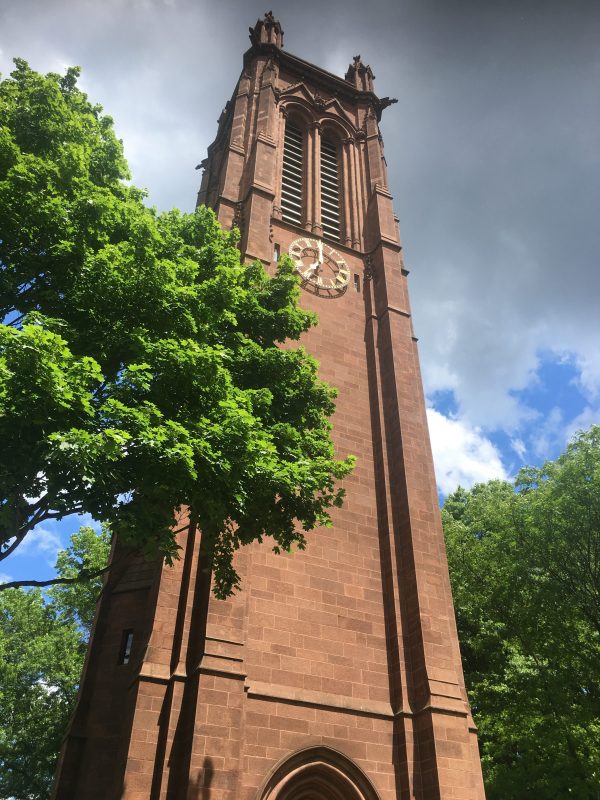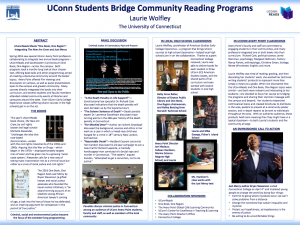http://www.directionsmag.com/entry/want-your-gis-students-to-excel-as-pros-try-service-learning/439251
Students that participate in GIS-based community service learning projects have the opportunity to apply classroom learning to real-world problems, gaining valuable experience that can help them succeed as GIS professionals; at the same time, they can make significant contributions to their community. The benefits to the students and the community seem obvious, but service learning is not as common as one might expect, primarily because educators face a variety of challenges to implementation.
In an effort to explore the many challenges, as well as the motivations for initiating and sustaining service learning despite them, I conducted focus groups and individual interviews with educators who have implemented GIS-based service learning projects in their classes at secondary schools, community colleges and universities. I asked about the common issues they encountered when implementing their projects, as well as different practices they employed to overcome issues related to partner recruitment, institutional constraints and assessment. I hope that this brief review of the successes and challenges can help educators make informed decisions about whether to implement service learning, or how to best implement service learning considering their needs.
Why even consider community service learning?
According to the Center for Teaching at Vanderbilt University,“Community engagement pedagogies, often called “service learning,” are ones that combine learning goals and community service in ways that can enhance both student growth and the common good.”
Of the educators that I interviewed, many initially decided to implement service learning because they believe that “students need real-world projects,” or they see the “need for project-based instruction.” Although some educators are required by their districts, schools or departments to implement service learning, many of them eventually went above and beyond the requirement because they “want to have students do something meaningful.”
My own experience as a GIS educator at a community college resonates with the interviewees’ responses. Although my administrators did not require me to implement service learning, all of the GIS employers who advise the development of my institution’s GIS program emphasized the importance of field experience for students. Thus, service learning only makes sense, as it enables students to build professional connections and gain experiences that will be invaluable to their future careers.
The biggest challenge: partner recruitment
From speaking with educators, I learned that the recruitment of partners is by far the greatest barrier in the implementation of service learning. In part, instructors often have to donate personal time to search for projects and to evaluate partners and the proposed scope of work for students. In particular, one interviewee remarked that she wants to safeguard her students against partners that may perceive service learning as an opportunity to exploit students for free labor. In other cases, partners may be overly ambitious in the tasks that they assign to students given the length of the academic term. Thus, in a successful service learning partnership, it is vital for the instructor to act as a mediator between partners and students, establishing realistic expectations based on predefined learning objectives early in the partnership.
Within the area of partner recruitment, the strategies mentioned by my interviewees can be classified into three categories. These strategies have distinct advantages and disadvantages, and one may be preferred over another depending on the project learning outcome(s). The three strategies are: instructor-initiated recruitment, student-initiated recruitment and hybrid recruitment.
In the instructor-initiated recruitment model, instructors seek out partners and assign them to students. While this model allows instructors to vet partners and standardize project scopes to ensure their appropriateness, most interviewees have found this model extremely time consuming. In addition, students are less receptive to a partner that is assigned to them compared to one that they have chosen on their own.
In the student-initiated recruitment model, students are asked to converse with members of the school or the local community in order to identify a cause that is of interest to them. Compared to the instructor-initiated model, instructors generally find higher completion rates when students choose their own partners, with the added benefit that students will have to practice their communication skills in order to seek out partners. However, due to the diversity of student interests and partner organizations, one interviewee cautioned that instructors will have to be flexible regarding project ideas. Moreover, the range of projects may also present unforeseen assessment challenges, which will be discussed in the next section.
In the hybrid recruitment model, students are asked to identify, deliberate and vote on a problem within their community. Once the problem is agreed upon by a student majority, instructors seek out partners for the students. This model encourages students to learn more about their community, as well as experience the process of framing viable research questions. As one interviewee pointed out, this opportunity to define a problem “is the first time for a lot of them [students]”. However, similar to the instructor-initiated model, it may require a lot of time and effort from instructors as they look for partners.
Institutional constraints
For the most part, many of my interviewees agreed that school administrators and the community are generally supportive of the idea of service learning. However, even for instructors who are enthusiastic about service learning and have institutional or external support, such as software donations, the limitation of time remains. Many instructors already are pressed for time to cover the required curriculum, which leaves little room to experiment with new practices like service learning. In addition, the latent benefits of service learning, such as civic engagement, empathy and social decorum, are often not explicitly required by state standards, nor quantifiable, thus making it especially difficult for instructors to justify service learning to school administrators or parents despite its long-term benefits.
One way to increase the visibility of service learning’s long-term benefits is to publicize the impact of student projects. This may take the form of organizing local conferences for students to present their works to school administrators or the local community, or initiating interdisciplinary collaborations with other disciplines that may be less inclined to initiate service learning on their own. One example of such collaboration, from my own experience, is the partnership established between the GIS program and the American Indian Studies program. Under the partnership, students enrolled in my GIS course help local tribes map out their cultural assets, thus learning not only technical skills in the process, but also the cultural and political issues that may arise in working with sensitive data. Many of the interviewees that I contacted collaborated with instructors from outside of their own disciplines, and hosted workshops and conferences for students to present their work to the community.
Evaluation issues
Unlike the standardized classroom environment, students are exposed to very different technical and logistical challenges in service learning, much like in the real world. Consequently, it is especially difficult to quantify or assess student efforts using a common metric. Thus, for instructors who are interested in service learning, it is crucial to keep their grading criteria broad and to focus on assessing higher level skills such as critical thinking, research, writing and reading, rather than focusing on specific competencies. This last point is particularly important, because it shows that service learning is not meant to be a replacement for standardized assessment or classroom instruction. Instead, service learning is meant to complement traditional modes of instruction and help students see the applicability of their classroom learning in the real world.
Acknowledgement
The author is grateful for the time, efforts and invaluable advice provided by the interview and focus groups participants in this study. This material is based upon work supported by the National Geospatial Technology Center of Excellence and the National Science Foundation under grant no. 1304591. Any opinions, findings and conclusions or recommendations expressed in this material are those of the author and do not necessarily reflect the views of the National Science Foundation.







